|
dupersaurus posted:Do you guys have a favorite online film lab? My local labs are kinda annoying. I'm looking at The Darkroom or Indie Film lab, but it feels like a shot in the dark I was happy with the developing that The Darkroom did for me, but their scans were dogshit, so I bought a scanner. Eventually I noticed scratched negatives so I tried out Richard Photo Lab for developing and they have been a bit better so far. What questions should I be asking myself if I want to figure out if developing my own film is right for me? If I don't have room for a properly ventilated dark room, and if I want consistent results, I am guessing an automated processor is the way to go? Besides the chemicals, some water is required as well; will tap water suffice or is distilled water required? How do I dispose of chemicals? What are the maintenance costs of an automated film processor? I would primarily be doing BW and C41 rolls in 120. I do some photo lithography at work, so I would prefer a programmable/automated setup to create a large separation between work and hobby, but I am not sure what my options are.
|
|
|
|

|
| # ¿ May 13, 2024 18:02 |
|
Thanks. This would certainly be less expensive and less risky than an automated processor. Getting the temperature right and dust management will be a bitch. Will I be shooting myself in the foot if I use somewhat hard tap water? What process steps do I adjust to get a relatively flat film? Or do I just roll it up in the other direction?
|
|
|
|
Thanks all. Final question: I have been using two labs for developing all my film, and I handle all my film the same way. However, only Ilford Ortho comes back with this poo poo (dark dots across image):  People seem to think it's water condensation, but I am at a loss where it comes from because (1) I handle all my film this way and (2) the film is stored at room temperature before opening. What experiments can I do to narrow down the root cause of this?
|
|
|
|
wolfs posted:What websites have pretty comprehensive film stores? I feel like getting some random b&w film stocks to play with I'll throw this out there: https://www.freestylephoto.biz/category/2-Film/Black-and-White-Film I am a newbie who only shoots 120, so perhaps I am full of poo poo, but things worth considering: Some films are just other films that have been repackaged. Sometimes "character" is really just "poo poo quality control" at a higher price point to make it look intentional. So far the only character BW film I have actually enjoyed in a few instances was Potsdam Kino.
|
|
|
|
I severely overestimated the quality of lab scans when I started out with film, so I bought a refurbished V850 after literally two rolls, and I am much happier now.
|
|
|
|
Apologies in advance for a noobish post. I forced myself to stop using a metered prism a while ago as it would allow me to either travel lighter or pack an extra lens + back. Also, I just love the WLF of the RZ67 (and my GW690 doesn't have a meter LOL). This forced me to use an external light meter (Sekonic 608), which I have been enjoying so far as it's light as hell. My initial experiments with just an incident meter (place meter at subject, extend dome, point toward lens) were a mixed bag, so I switched to using the spot meter. The results were better, but still not perfect, especially in situations where there is a high dynamic range. As I am reading "Beyond the Zone System", I think I found my mistake. My metering technique for high dynamic range situations is: Measure the highlights I care about and the shadows I care about, take an average -> exposure value. I think the mistake is that the light meter expects middle gray to be at 18%, but in a film with 9 stops of dynamic range, middle gray is at 6.25%, 1.5 stops darker than what the light meter is expecting. So in this hypothetical situation with 9 stops of dynamic range in the scene (and assuming the film can accommodate it), I should measure highlight/shadow and average as before, but then underexpose by 1.5 stops to place that exposure value at 6.25%, right?
|
|
|
|
eggsovereasy posted:for spot metering my meter (sekonic l558 i think?) has an average function built in so i just meter a bright area and a shadow area and hit the average button, looking at a picture of your meter it has that average button too. Yes, that is how I average as well. But will that not place the resulting exposure value at 18% gray? The issue being that 18% gray is not the mid-point of my hypothetical 9-stop scene. Edit: I guess it's time to fill up a roll comparing the two meter techniques and see what happens. theHUNGERian fucked around with this message at 02:19 on Feb 20, 2022 |
|
|
|
Wild EEPROM posted:carry a point and shoot with manual controls and use that to estimate your metering I started out that way, but I got tired of having to deal with two cameras at once. Twenties Superstar posted:Good luck on your quest for hypothetical perfect exposure I am not trying to get perfect (there is no such thing), but I consistently mess up shots with bright highlights and dark shadows (Ektar for example), it's bothering me, and I am confident that I am at fault, not my gear. While I realize that not every picture is about maximizing dynamic range, Ektar likes full sun, likely creating dark shadows, and I should therefore know how to handle it. Edit: And yes, I realize that developing plays a role as well. theHUNGERian fucked around with this message at 04:08 on Feb 20, 2022 |
|
|
|
Megabound posted:Carry no meter and teach yourself how to estimate light based on shadows. Free yourself from the tyranny of battery powered devices and embrace vibes. That day will come, but learning by trial and error is too slow for me.
|
|
|
|
Alright, I'm going to try developing my own BW film. What is the most likely cause for the plume-like defect below?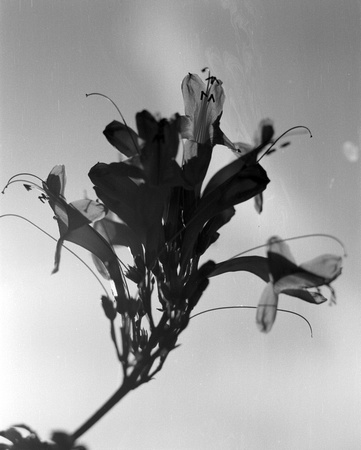 I thought it was poo poo film, but I saw a similar defect in a roll of C-41, so I am now suspecting the lab. Also, how do I decide which chemicals to buy. There seem to be a million different developers, stops, fixers, wetters. Are they all compatible with each other? I am inclined to just buy DD-X, Ilfostop, Ilford Rapid fixer, and Ilfotol. One argument I have heard for using one developer over the other was 'shelf life of an opened and half-used bottle'. Can I extend that number in an easy way? Edit: I want to avoid powders (D-76, XTOL, Perceptol), and I don't want to deal with crazy ratios (HC-110), so DD-X should work well. Dev chart shows data for PanF+, XP2 Super and Delta 3200, so I should be good. theHUNGERian fucked around with this message at 18:57 on Feb 21, 2022 |
|
|
|
Ziggy Smalls posted:Dev chems can have their shelf life extended if you reduce exposure to the air. The classic solution is accordion style bottles that are collapsible. Woodworkers have a similar problem and somebody had the bright idea to market a spray can filled with pure Argon. You spray a little into your chem bottles and since argon is heavier than air, it rests on top of the chems shielding it from oxygen and moisture. Its sold under the brand name Bloxygen. Yeah, I also use Nitrogen to remove air from photoresist bottles in our cleanroom, but I didn't know it (or Argon) came in spray cans for home use. That will certainly help!
|
|
|
|
Alright, a B/W film developing kit is on its way to me. I will make an attempt to automate parts of it asap. My first thought was to buy some cheap-rear end Lego parts to make a roller that also rocks the developing tank along its axis of rotation, Alright, US is a bad idea for film. Edit: But what about platform rockers (mixers or orbital shakers) that chemists use? theHUNGERian fucked around with this message at 02:36 on Feb 28, 2022 |
|
|
|
Megabound posted:Black and white development is not designed for a rotary system, it's designed for you standing there and inverting the tank every minute or so. Going rotary will lead to more issues to resolve, like surging and over-agitation. If you want to go real lazy just do stand developments, which is where you mix a dilute developer, usually Rodinal at 1:100, and let it stand in the tank with no agitation for an hour. I read about stand dev just last weekend, so I was going to give that a try eventually. Can you elaborate/link why rotation is bad for B/W. Also, with an orbital shaker, the tank would not be in a typical rotation position, instead it would be standing upright. (edit) and get consistent agitation while I am being as lazy as possible. theHUNGERian fucked around with this message at 03:26 on Feb 28, 2022 |
|
|
|
Got it. I'll do more reading on this subject, but I am still biased toward something that can be programmed (so it is repeatable) + doing test rolls to determine the optimum dev time. Will report back.
|
|
|
|
Cool, I'll McGyver something together with my Arduino and some Lego parts. As I mentioned in a previous post, I do semiconductor processing (including lithography [expose/develop]) as part of my job, so I was super hesitant about even developing my own film as a hobby. But the lab has messed up a few times now, so this is the way forward. Unfortunately, the only way I can do it without wanting to shoot myself would be to automate parts of it, and rotation seems the easiest way. I am sure it will lead to more consistent results too, with the only downside being a baseline calibration (which I would have to do anyway). And if it all blows up in my face, I will still document it all, so others can learn from my mistakes.
|
|
|
|
some kinda jackal posted:
drat! Now I feel bad for completely dismissing the Kiev-60 when I first started out with MF. My update is that my home developing kit has arrived. I also realized that building an automated rotary agitation tool with Arduino/Lego from scratch was silly. After some reading, I found a couple of working commercial units on ebay (Unicolor, Simmard, Beseler). I figured it would be easier to fix them (if needed), than to build my own. Until they are here, I am building muscle memory for loading film onto the reel in the dark. I should have my first test rolls developed in 2-3 weeks.
|
|
|
|
Both 800T and 50D have disappointed me, so I have low expectations from Cinestill.
|
|
|
|
Post some samples showing off what you like about it. I still have 3 rolls of each and perhaps I was using them wrong.
|
|
|
|
A noob's developing log: I finished developing my first three rolls. Not gonna lie, it sucked as much as I had anticipated, even though I used a motorized roller (Simma, sinusoidal rotation = rotation and gentle rocking back and forth around axis of rotation). Hopefully it's like all other things you do for the first time and it gets easier with time. The first roll (Delta 3200) was trashed because I thought it had a sticky residue, and I would not put it anywhere near my scanner as I feared it would ruin the glass or the plastic cover. I had assumed I used too much PhotoFlo (1:200) or that I had agitated it too much (it was foaming when I unloaded it), but in hindsight the stickiness was likely caused by the emulsion not being completely dry. Oh well, I likely only lost 1-2 keepers, which I can reproduce. The second roll (Ortho), I somehow managed to load into the reel in the most awkward way. I could tell by feel that something was off, but I had no idea how to fix it in the dark, so I just moved along. I had reduced the PhotoFlo to 1:400, but there was still some foaming, so I did a water rinse, but this was begging to leave water streaks. As I tried to remove them, I again noticed a sticky film, and this is when Google told me that it is normal, the emulsion is sticky until it is completely dry. I probably ruined a few shots by touching the emulsion before it was dry. Third and final roll (TMax100) gave me a heart attack as the developer poured out light pink (even though I used fresh developer for all rolls, I was trying to build muscle memory), and even the fixer had some strange color to it. Fortunately the film developed, and I am not going to touch it for the next couple of hours. Let's hope I ironed out all the major quirks. Recipe (for anyone who cares): Since I am using rotary development, Ilford and goons recommended reducing developing time by 15-25%. I split the difference at ~20%, buy reducing the concentration by 10% (keep developer at the recommended amount but add more water) and reduce the develop time by 10%. In hindsight, reducing the ratio was perhaps a bad idea. I should probably just adjust one parameter (time). 0. One roll of 120, installed on bottom reel, second reel added to tank (Jobo 1540) to keep bottom reel from moving around too much. 1. DD-X:H2O = 100:450 mL, agitation in Simma roller, develop time from massive dev chart - 10% 2. Ilfostop:H2O = 30 + 520 mL, agitation in Simma, 1 minute 3. RapidFixer:H2O = 110 + 440 mL, agitation in Simma, 5 minutes 4. H2O, rinse/dump 2x, agitate by hand 5. PhotoFlo:DI water = 7.5:3000 mL, immerse and gently move around solution (in a 1 gallon container) for 1 minute Any other things I am doing wrong?
|
|
|
|
Cool, thanks. Another lousy day outside, so I'll get right to scanning.
|
|
|
|
Apologies in advance for the dump and some cliche subjects. Second roll of film I developed myself (the first ended up in the trash because I am an idiot): Ilford Ortho Plus on the RZ67 ProII. I am pretty happy with the result, though I feel that the negatives are too contrasty. The film is pretty curly, but that could have been caused by not having enough weight on the bottom of the roll. 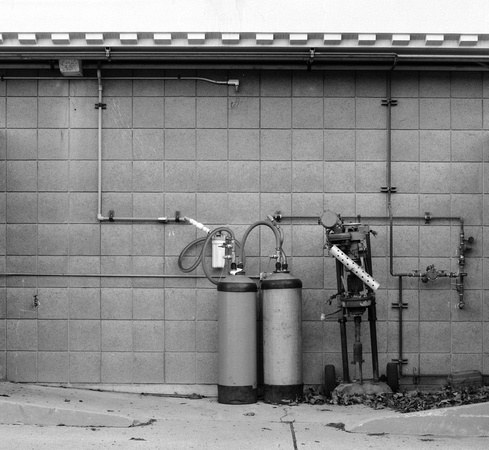 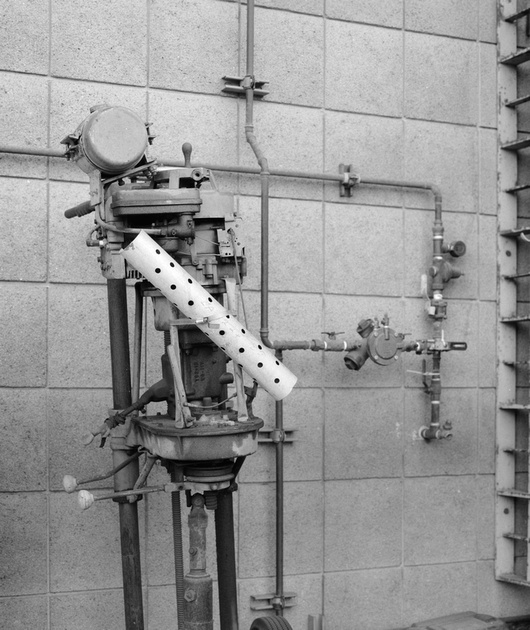  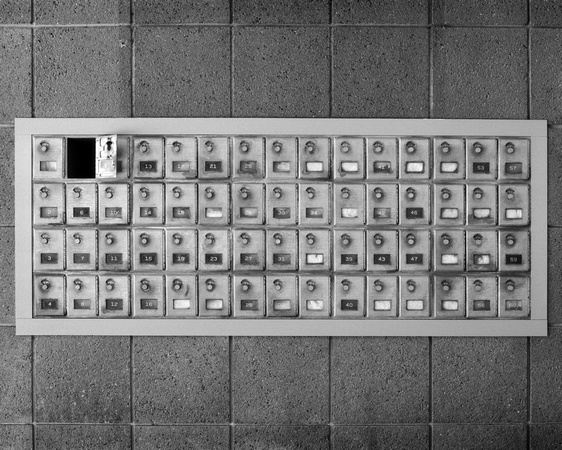 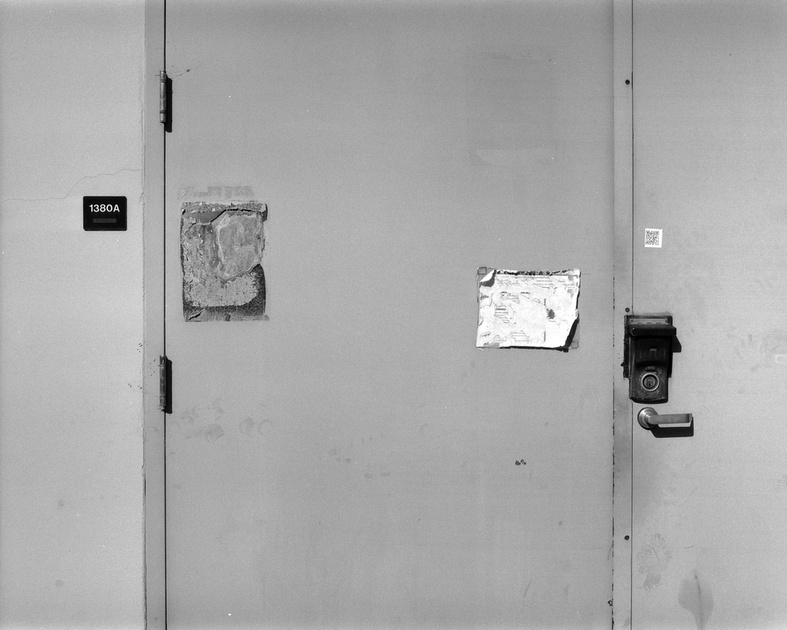 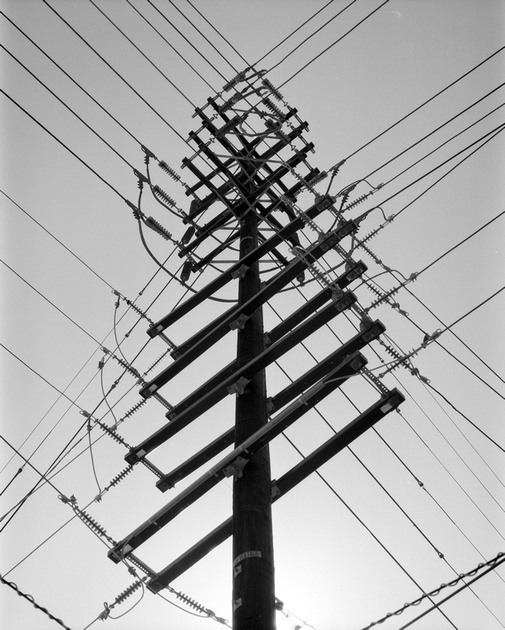 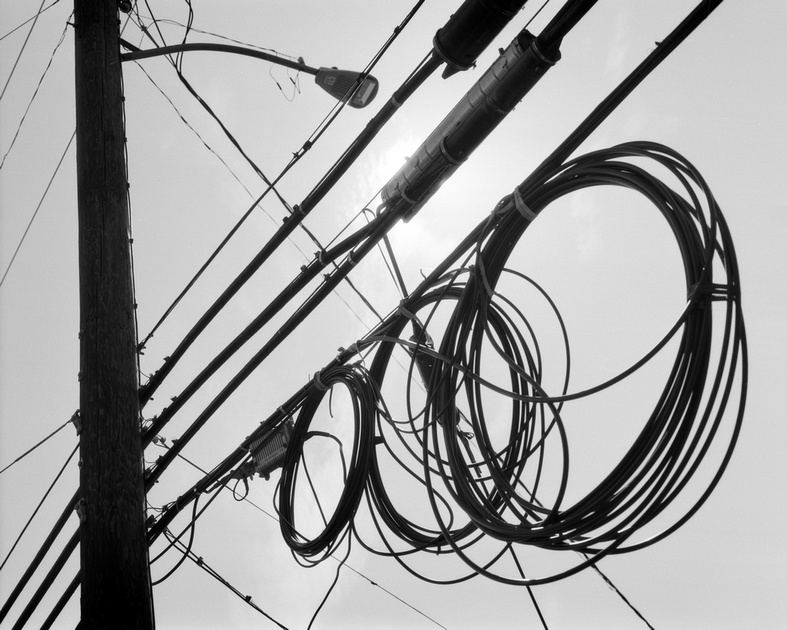  Third roll: T-max 100 on GW690II. Very flat -> very easy to scan. But I think I messed something up in developing as some of the scans are almost transparent. 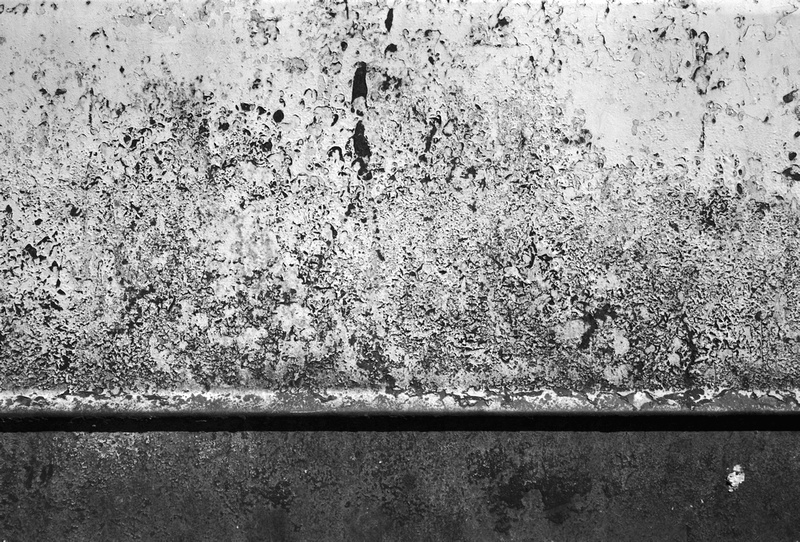 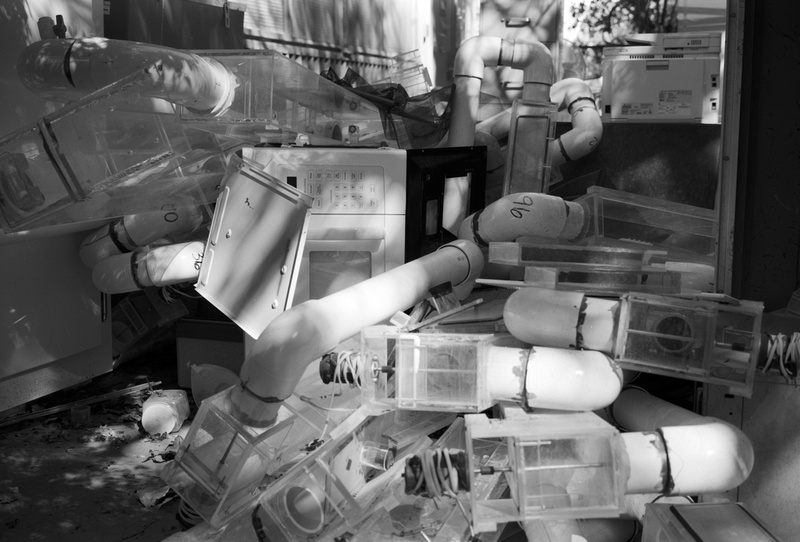 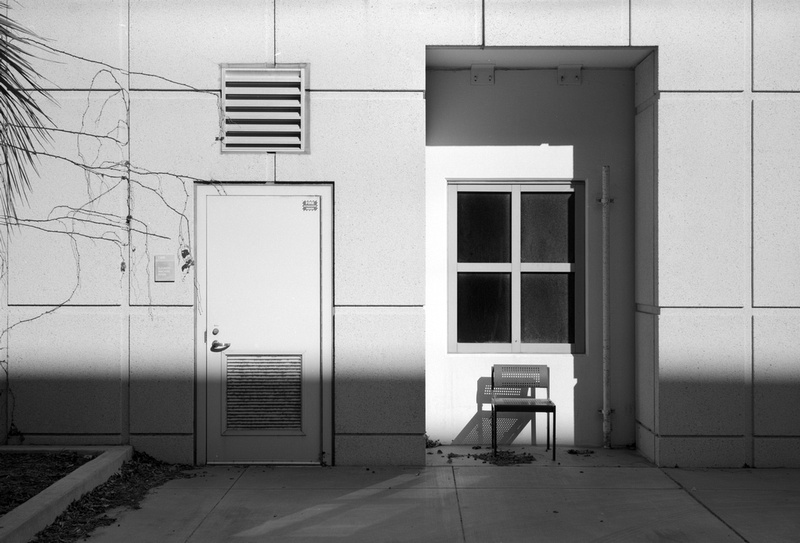 A nod to alkanphel. As annoying as developing is, once the work was done, I did feel accomplished. theHUNGERian fucked around with this message at 18:29 on Apr 3, 2022 |
|
|
|
some kinda jackal posted:Arggg develop posts making me want to go buy chemicals again. Shot a few rolls of 120 a few weeks ago that I need to get out of the can. If my go-to labs hadn't returned (1) scratched negatives or (2) a few rolls with defects that looked like they were caused by improper handling (see below), I never would have tried to develop film myself.  An example of defects (Ilford Ortho Plus). Notice the dark gray spots across the image.
|
|
|
|
Admiral Bosch posted:i like all these but i really dig this one. Thanks. I too like "Banged up dumpster with bird poo poo accent". What are people's final rinse tricks? I had too much PhotoFlo last time, so I reduced it (3 drops into 1 liter of water), which made the foaming/bubbling go away, but I still end up with water spots that don't bead off, so they just stay on the film and leave spots (even though I used distilled water). Is it worthwhile to submerse the film in water and slowly pull it out so no water drops form on the film surface?
|
|
|
|
Thanks, I'll try hard shaking next time. The last few times I thought about shaking it I worried about accidentally dropping the reel ... but maybe that will add c̴̪͐͒͌͜͜h̸̢͉̟̿̒̒a̴͓̙̾̽̾r̴͔̼̿̓͜a̵̢̢͖̽̈́̿c̵͍̘͓̓́t̸̘̪͉̽̕e̵̟̼͕͌̚̕r̴̘͕͎̾̓̿ to my lovely negatives?
|
|
|
|
Not sure if anyone cares, or if this is even the right thread, but after buying a dozen or so photo books and finding most of them only ok, I finally got my mind blown by "New York in Color".
|
|
|
|
bobmarleysghost posted:who are the photographers included? "New York in Color" is just Ernst Haas' work. "Magnum Magnum" is another favorite as it covers the work of many photographers.
|
|
|
|
I have zero direct experience, but I would label the film as "push to ISO3200" to increase the chances of TSA granting your wish to hand check them.
|
|
|
|
I use Silverfast to scan my film. It's the scanning software equivalent of the Sony menu layout. It's overwhelming because of all the options, but once you figure it out, you realize you only need a couple of them and it gets much easier to use.
|
|
|
|
One of my rolls of Foma 100 was labeled "ASA400" inside the box, so I shot it at ISO200, but once developed I saw that the rebate said "100" and sure enough the pictures were underexposed. I mean, I got lucky in that I actually dig some underexposure in BW (with the right subject), but no way I'll pay money for film with this level of quality control issues.
|
|
|
|
My first Hasselblad arrived yesterday. What an absolutely wonderful marriage of elegance, size, and weight. If anyone is interested, I'll be listing an RZ67 Pro II kit for sale in a week.
|
|
|
|
For future reference regarding Hasselblad lenses: https://www.hasselbladhistorical.eu/HW/HWLds.aspx
|
|
|
|
Cassius Belli posted:Wait, what? Real, apparently: https://richardman.photo/2018/10/my-online-encounter-with-transphobia/
|
|
|
|
Is this a light leak? The negative is dark as hell, so it is overexposed, but I metered it the same way as all other frames which came out fine. I was shooting approximately at a right angle to the sun, so the angle formed by subject/camera/sun was about 90 degrees. I guess I should do test shots where my body does (not) block sunlight from hitting the WLF during the exposure? I don't think it's an issue with the focal plane shutter as that one goes left/right, not up/down.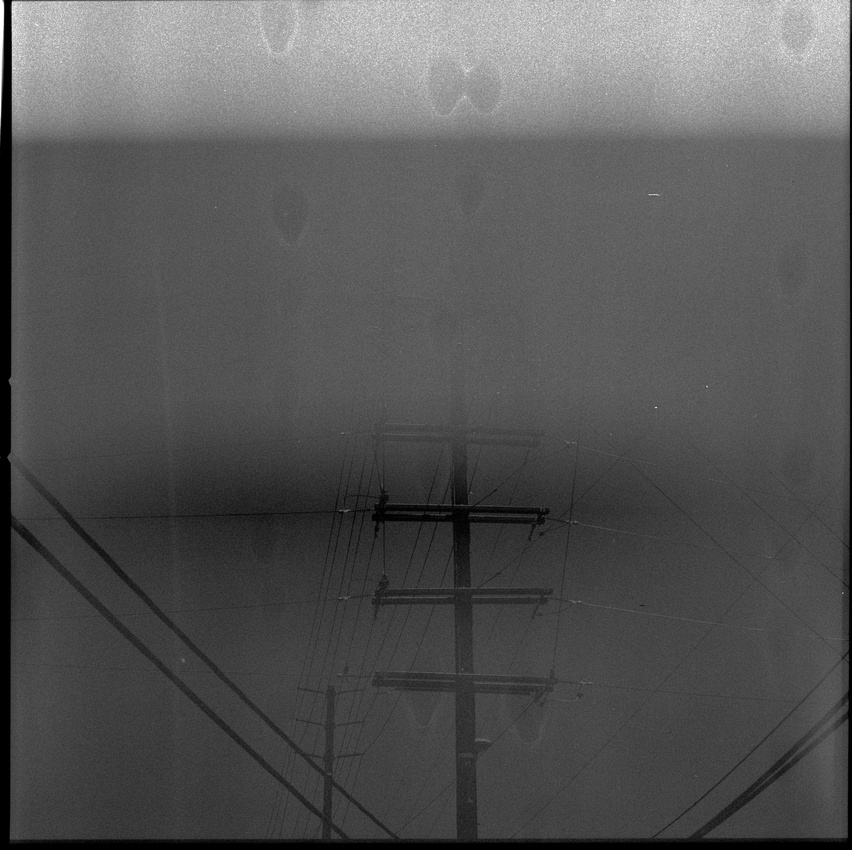
|
|
|
|
Ethics_Gradient posted:My first reaction was shutter, but I guess not. That dark spot in the middle made me wonder if it wasn't development, but if the other frames are fine then it's probably not that either. I know it's not what you're asking about, but I'd guess those circular stains are from hard water drying on them, try using a wetting agent if you aren't already. The other frames are fine. And yes, I am working on removing the water stains. I am already using distilled water and PhotoFlo, but I guess I am not using enough. Edit: Although, full disclosure, I develop using constant agitation and I use DD-X at 1:9 rather than the recommended 1:4 ratio. But since all other frames are fine, I don't think this is the root cause for the issue I am seeing. The only variable that is new is the camera (a 2000FCW). Edit2: I removed the back to check for issue that my casual visual inspection missed. Sure enough, all the screws needed about a quarter of a turn to be tight. theHUNGERian fucked around with this message at 02:10 on Jun 28, 2022 |
|
|
|
Those vertical lines can show up in C41 when there are no sprockets, but I only see it in severely overexposed areas. A lab I have used calls it the staircase effect: https://www.richardphotolab.com/blog/post/common-film-scan-issues-and-what-you-can-do-about-them
|
|
|
|
theHUNGERian posted:Is this a light leak? The negative is dark as hell, so it is overexposed, but I metered it the same way as all other frames which came out fine. I was shooting approximately at a right angle to the sun, so the angle formed by subject/camera/sun was about 90 degrees. I guess I should do test shots where my body does (not) block sunlight from hitting the WLF during the exposure? I don't think it's an issue with the focal plane shutter as that one goes left/right, not up/down. Bought another back which looks practically unused, and yet another frame shows a similar issue although it's at a different position in the frame and it happened at a different shutter speed. I've now replaced the battery (not sure how it could have caused this, but I was out of ideas) and shot another test roll. Fingers crossed I didn't buy a lemon.
|
|
|
|
Hey folks, Given that this defect goes through the film border, I think it is safe to dismiss the shutter as a cause. Film that was developed by the lab doesn't show it either, and so I conclude that I am messing something up in my developing at home that introduces a light leak. I am using a JOBO 1540 and even Delta 100 is impacted by this. It is somewhat consistently the last frame of each roll. How do I debug this?
|
|
|
|
Ethics_Gradient posted:I once returned what was probably a perfectly good Super Ikonta because I had forgotten to insert the light trap that goes down the hole in the middle of the reels of my Paterson tank. Hopefully not that! The same tank later got a crack in the side that leaked a bit of fluid, however it never seemed to let enough light get in there to cause an impact. I've silicone'd it up and it's good as new now. I have the light trap installed and everything fits snugly. There was some fluid leaking out at the top, but that's because I forgot to push the top cap all the way in. No liquid leaks since then. Though I find the finish of the center column to be a bit shinier than I would prefer. But there is no rewinding with 120, so the last frame is most exposed during unloading. Nevertheless, I have loaded/unloaded Delta 3200 the same way back when the lab processed my bw film, and I didn't see an issue there. My best guess at the moment is to darken the room where I am processing (it's not a dark room). Or at least pour developer into the tank and put on the top cap all while still in relative darkness.
|
|
|
|
I've also read that with lab scans, communication/feedback is critical. But yeah, even then, you'll only get a lousy jpg, so if you give even a slight poo poo, buy a refurbished scanner that will pay for itself in ~a year, and have 48 bit tiffs.
|
|
|
|

|
| # ¿ May 13, 2024 18:02 |
|
Helen Highwater posted:Two things about the moon (apart from the things that VelociBacon said): ... and as you zoom in to resolve surface detail, you'll find the full moon to be a boring and flat subject. So shoot it any other phase if you want some drama.
|
|
|






 Kiev-60
Kiev-60